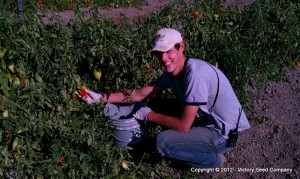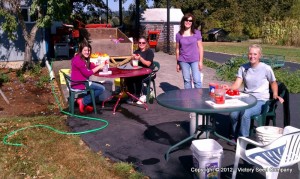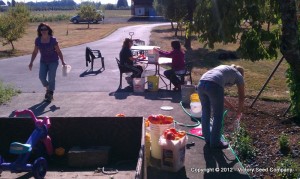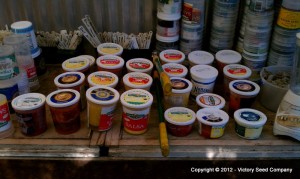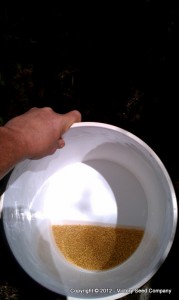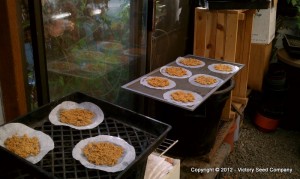If you have read other things that I have written over the years, you know that I have a tendency to reminisce (and ramble). I am not the sort that dwells on or lives in the past, but I actively use memories and experiences, as well as lessons from general history, to better understand the present and help me to plan for the future. I believe that this is a healthy behavior for people to practice.
Over the past couple of weeks while preparing the farm for the long winter months ahead, many of the tasks are so routine that I am allowed the luxury of performing them without much thinking and thus allowing my mind to wander. (I blogged about this topic a while back.)
Some of the Fall tasks on the farm include harvesting our seed crops, preparing the fields for a winter rest, pressing cider, hauling firewood to the cellar, picking up nuts, canning and drying food, turning off water to outside faucets, storing hoses and irrigation parts, cleaning out rain gutters, and a list too long to go into here. While doing these things, I began to think about how I got to this point in life, how many times I have done this same Fall routine, and whether it now constitutes classification as a habit, a ritual, or a tradition?
Although Denise was raised on a farm and I had strong connections to my family’s, we didn’t get to start our life together on acreage. Out of economic necessity, we first settled into a life in the suburbs and went to work acquiring knowledge, experience and some working capital. Even though the “eat local” and “slow food” movements were still decades away, “health food” was common and organic gardening was a grassroots phenomenon. We saw great value in raising as much of our own food as possible and began developing a “homesteader attitude”[1] when it came to choosing our personal lifestyle.
When we were able to buy our first house, we fell in love with a little “starter home” in a fairly new housing development in Petaluma, California (Petaluma is where we both grew up). Although it was small on the inside, it had a large garage where I set up my workshop and it was built on a large lot on a quiet cul-de-sac.
We immediately began to “homestead” the yard by altering the landscape for optimal productivity. We removed most of the lawn and replaced it with low maintenance beds and areas where we could establish vegetable gardens. We planted fruit trees, berries, artichoke, grapes, hops and various perennial plants served double-duty as ornamentals and edibles.

A photo of a much younger, and slightly thinner, "yours truly" getting an early start on our 1986 garden in the 'burbs.
Like so many other developments in the area, the land underneath ours was once dairy pasture. Its dark, adobe soil was rich but difficult to work. It was heavy and dense, sticky when wet and hard as concrete when dry. Once amended with (literally) tons of composted mushroom mulch, it grew just about anything we wanted to experiment with. This great soil paired with Petaluma’s awesome climate made for the best location that I have ever had the pleasure to garden. It is no wonder that 100 years prior, Luther Burbank chose this region to establish his horticultural career.
Although our “farm” in Petaluma was only a quarter-acre city lot, the skills that we learned prepared us for purchasing my family’s farm in Oregon, without hesitation, when the opportunity arose in the late 1980s. The seed for what eventually grew into the Victory Seed Company was sown in Petaluma.
This brings me back to the present day and to my contemplation at the beginning of this blog post. Humankind’s survival has always been dependent on how well we made our plans during the winter months, how those plans were implemented in the spring, how hard we worked in the summer and how much bounty was harvested and stored away in the fall.
As the fourth generation to work the land on this farm, I often find myself wondering, “What would Great-grandpa think about me doing this?” or “What would Grandma think about us doing that?” I feel a profound connection to my ancestors and I understand that everything that I do is simply building upon the foundation that they quite literally laid. I trust that my descendants will someday share this experience.
So whether these seasonal behaviors that we practice have been learned from books or the internet or videos or our ancestors, they are routines that are more than habits and more significant than going through the motions of empty rituals. They are in fact traditions by the purest definition of the word.
1. One of my favorite books was given to me by my Dad back in 1973. It is called, “Homesteaders Handbook” and was written by Rich Israel and Reny Slay (©1973). It, along with the Foxfire book series and Bradford Angier’s, “Field Guide to Edible Wild Plants” (©1974), was the core of my childhood homesteading or self-reliance reference library.
